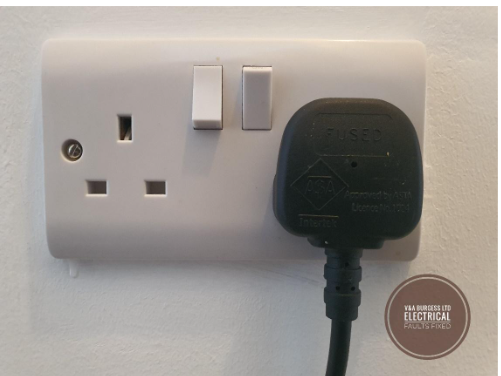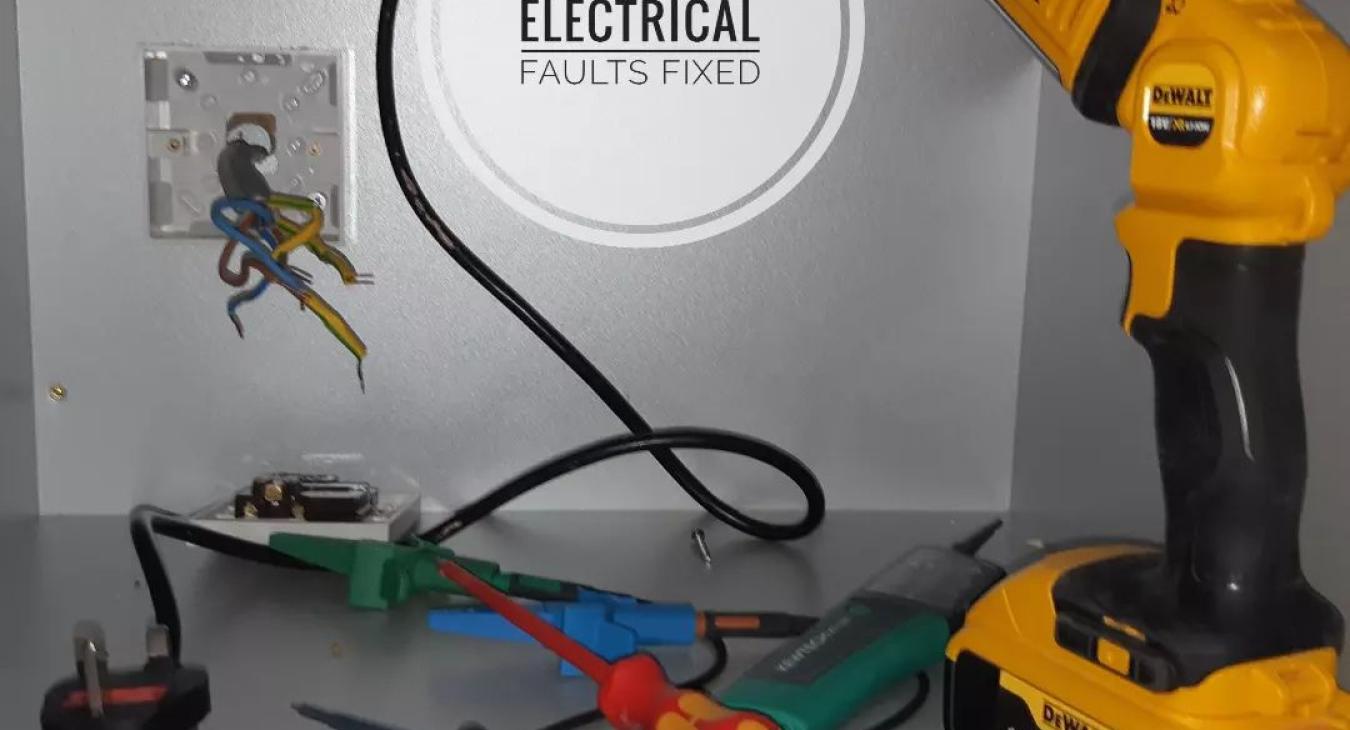Plug socket in cupboard - Electrical Faults Fixed
There are many places throughout our homes that electrical accessories are installed, floor level sockets, light switches halfway up the walls and pull cord ceiling switches. These are all common areas where one would expect to find such things.
There are slightly more obscure places where electrical outlets might appear such as electrical sockets in harder to reach areas. A PLUG SOCKET IN CUPBOARD is a common occurrence in many kitchens throughout the UK but is it safe? Is it right? Is it ok?
Table of Contents
1) Is a plug socket in a cupboard, ok?
Under the BS7671 Safety Requirements for Electrical Installations there is no specific requirement that directly relates to a plug socket installed in a cupboard environment BUT, there are regulations that would apply in a round-about kind of sense.
As long as your PLUG SOCKET IN CUPBOARD is installed:
- With good workmanship and materials
- In a secure manner
- Without likelihood of mechanical impact
- To minimise the strain on cables
- Such that heat does not build up
- Otherwise in accordance with the relevant wiring regulations
- Then it is likely to be perfectly acceptable and safe.
2) What about Kitchens?
It is common to find a plug socket in a kitchen that is installed in a cupboard. If you are at all unsure about the safety of a plug socket installed in your kitchen cupboard then contact me and I will happily take a look at the situation for free! We can do this via photographs sent over internet messenger apps like WhatsApp.
In the first instance, check that the kitchen cabinets are strong enough to support the surface mount socket. Some kitchen cabinets are flimsy at the back of the cabinet and installing a socket onto this surface may not provide adequate support for the wiring, the socket (especially double sockets) and the action of connecting electrical appliances.
Back to top3) What about under the sink?
I get it, you are worried about the risk of water entering the socket and causing all manner of electrical mayhem not to mention possible electric shock and the risk of fire hazards where electrical arcing takes place.
If you have a plug socket under the sink then there is a very slight risk of the sink leaking onto the socket, a pipe bursting and flooding the socket and so forth.
In reality, the likelihood of a pipe bursting under the sink or a leak developing here is about the same as anywhere else in the house. There are many hidden pipes under floors, bath tubs and showers that will also present the same risk to other receptacle outlets, socket outlets and anything else in electrical systems.
The roof could leak tomorrow and water could burst into several light fixtures, right?
Having said that, it is good to be sensible. If a socket is installed too close to a water pipe or joint then the direct risk may be higher such as in the photograph.

In this particular case, the front of the socket could not even be removed to allow for testing and inspection of the wiring nor socket replacement. This situation is arguably dangerous or at best a serious inconvenience. It was difficult to insert and remove electrical plugs in this case.
Back to top4) Why is there a socket in the hall cupboard?
In older UK properties, it was standard practice to install the consumer unit or fuse box inside a cupboard near the front door of the property in the hall way. For this reason, it was often very easy to add a plug socket in this cupboard.
In older homes, the internet router is often installed in this cupboard as frequently the internet cabling also enters the property here. Internet routers require a power supply, hence an electrical socket installed in the cupboard is extremely handy.
Back to top5) Why are plug sockets put in cabinets?
Kitchen appliances need power. Excessive kitchen sockets can look rather unsightly even with the massive range of aesthetically pleasing products on the market these days. As such one option available to kitchen installers and electrician is to install the sockets inside of the cabinet next to the appliance so the appliances can be unplugged when required.
Back to top6) Why not hide sockets behind the appliances?
Consider a washing machine, it is a large heavy electrical appliance and even more so when full of water. It is not uncommon for washer and dryer sockets to burn out and when this happens, electrical safety can be jeopardised. Its virtually impossible to unplug an overheated socket behind a large appliances full of clothes and water.
Sockets behind appliances are an inconvenience and where this has occurred, a switch should be installed elsewhere that has the ability to shut off the power to that socket OR the socket should be installed inside a cabinet locally.
Back to top7) Cabinet Sockets and Power Cords
Where there are electrical devices plugged in to kitchen cabinet sockets, it is important that space is left to be able to access the appliance plugs. The electrical wiring should also be installed to minimise the risk of damage.
Accessible outlets mean that electrical dangers can be dealt with quickly. The sockets should be installed with a few inches spare underneath before any surfaces are present. The best way is to leave a minimum distance of around 3 inches beneath the socket.
Sockets that are installed to close to the floor of the cabinet can mean damage to connected devices cords.
From the picture below we can see that there is some space needed beneath a socket outlet to allow for the power cord of any appliances.

Older kitchens can have the cabinet electrical points moved around to make them safer. When considering a new kitchen and wall socket locations, ensure that not only the wiring regulations and building regulations are followed but that there are enough electrical sockets for all the small appliances.
Back to top8) Electrical plug socket in airing cupboard
It is common to find a plug socket in an airing cupboard. In many cases, heating systems have been converted from a water storage tank system to a combi-boiler system which means that there is no longer any need for the hot water tank.
When this happens, there is no further need for the old switch, fused spur or fused connection unit and this has likely been converted into a plug socket.
In most cases, this is safe to do and assuming that the conversion has been carried out properly with the correct electrical installation technique, testing and certification, there is no need for concern.
Back to top9) Summary
A PLUG SOCKET IN CUPBOARD is generally ok but can raise doubts as to compliance with certain building and wiring regulations. From a safety perspective, a kitchen is rather a fixed part of the building in that, it is not generally removeable hence any electrical installations would be safe from accidental mechanical strain and damage.
Installing a plug socket into a dining room cabinet or plate cabinet would be foolhardy and likely non-compliant in any event. Cabinets can easily topple, be moved around and electrical wiring can become strained or snap introducing the potential for electrical fires or electrical shock.
Back to top
Read more articles
- Log in to post comments


